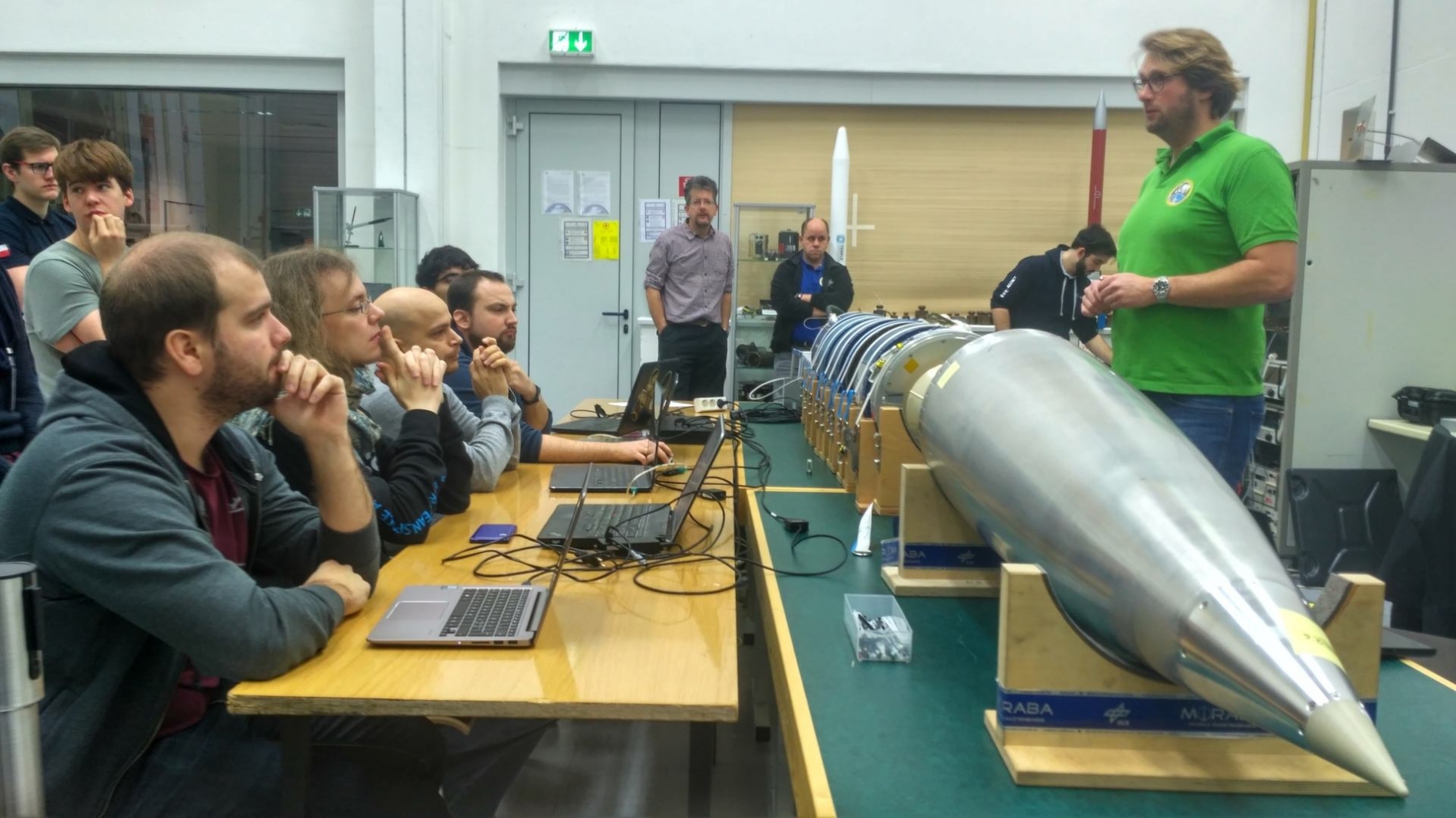YOUR BROWSER IS OUT-OF-DATE.
We have detected that you are using an outdated browser. Our service may not work properly for you. We recommend upgrading or switching to another browser.
Date: 18.02.2019 Category: general news, science/research/innovation, student activity
Our students have completed their work on an innovative gripper, which they want to test in microgravity and vacuum conditions. In March, the device they built will be launched to the height of 80 km on board the REXUS rocket
 Named TRACZ (Testing Robotic Application For Catching in Zero-G), the project carried out by students of Wrocław University of Science and Technology will check whether it’s possible to use a jamming gripper in microgravity and vacuum. Devices of this kind consist of a membrane filled with pellets that is made to work by manipulating pressure differences. The inflated gripper adjusts its shape to the object intended to be lifted, while the pellets harden after the air is sucked out, and the membrane tightens on the object, making it possible to carry it.
Named TRACZ (Testing Robotic Application For Catching in Zero-G), the project carried out by students of Wrocław University of Science and Technology will check whether it’s possible to use a jamming gripper in microgravity and vacuum. Devices of this kind consist of a membrane filled with pellets that is made to work by manipulating pressure differences. The inflated gripper adjusts its shape to the object intended to be lifted, while the pellets harden after the air is sucked out, and the membrane tightens on the object, making it possible to carry it.
There are already some ideas about how such grippers could be applied in space technologies, as they’re less complicated in terms of structure and operation than tools currently in use. This inspired our students to check how the device behaves when not impacted by the force of gravity. In the future, it will be possible to apply grippers of this kind in various areas of use, including autonomous and remotely controlled systems.
The students admit that although the final version of the gripper differs from the initial project, they are very satisfied with the project’s outcome. The organisers of the programme are impressed likewise.
- For us, it was an incredible adventure. ESA has invested a lot of its specialists’ time and expertise in us. Among other things, we were on a two-week trip during which we could learn from more than twenty experts in various fields. Although we’re still students, we already have a very solid foundation of competence, as well as extensive knowledge, which we wouldn’t have been able to gain in any other way - emphasises Aleksander Gorgolewski.
However, the project will not end after the launch of the rocket and the completion of the experiment itself. After recovering the device, the students still have to analyse the results, which may take up to half a year. - We expect a number of interesting publications because we really want the whole project to be as useful in scientific terms as possible - explains a member of the team.
The project was possible thanks to a subsidy from the Ministry of Science and Higher Education under the “The Best of the Best 2.0” grant as well as support obtained from sponsors.
For more information about the project, please visit the website and the Facebook profile.
Our site uses cookies. By continuing to browse the site you agree to our use of cookies in accordance with current browser settings. You can change at any time.